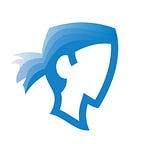Designing workshops that deliver results
A framework to design truly effective workshops
As designers, part of our responsibility is to facilitate the collaboration between multi-disciplinary stakeholders so that we can deliver a great product to our end users, and there is no better way to make this happen than by running hands-on design workshops with your team.
Why? Because the product team that you are probably a part of, is composed of talented individuals who are experts in their own field, but if we really want to leverage their potential, we need them working together and supporting each other.
Or as Robert Baratheon would put it…
The 7 P’s framework
But the thing is, workshops are much more than simply putting people into a room, and sticky notes onto a wall. If you really want to carry out a workshop that delivers the right results for you, you need to design it properly!
The 7 P’s is a framework credited to James Macanufo, that helps you define some of the basics you need to take into account when organizing activities with a broader team.
Note that a great plan can’t guarantee a great outcome, but it will help lay down the fundamentals from which you can adapt, and because it is a team effort, make sure that you align with your key stakeholders while using this framework.
So let’s get right down to it! To design a successful workshop you first need to define these 7 P’s…
1. Purpose
Why are we having this workshop? What are we trying to solve or achieve? As a facilitator, you need to be able to state this clearly and succinctly, and this purpose should be aligned with every key stakeholder of the activity.
example:
“We are bringing stakeholders from the business and development teams together, so that we can align on the challenges the product faces in Q2, and to brainstorm and decide on a plan of approach for Q3”
2. Product
This is where you define what it is that you will have at the end of the activity .What specific deliverable or design artefact will we produce out of the workshop? what will it do and how will it support our purpose?
example:
“At the end of the workshop we will have a set of high-level wireframes and flows that have been agreed upon by business and development, and a slide deck documenting the plan of approach for Q3”
3. People
Who needs to be there and what role will they play? One way to focus your list is to think of what questions are we answering with this workshop, and who are the right people to answer these questions?
This one is super important because you want to keep your workshop focused, so you need people who will provide a relevant contribution to your goal and not bystanders. If you are being forced to invite people to participate for “political” reasons, consider including them in a readout of the results instead of the actual workshop.
tip:
- Your workshop should have a maximum of 6 people to keep things manageable! If the subject merits more people, consider splitting into groups with more facilitators helping out.
4. Pitfalls
What are the risks of this workshop, and how will we address them? How can we be derailed from achieving our workshop’s goal?
These could be as simple as behaviour we might see in people and how to address it, or topics that should be kept out of scope.
examples:
“People tend to multitask, so we will have a rule of no laptops open to keep the focus”
“Talking about the concept of ’adoption’ can easily shift into the concept of ‘engagement’, which is not part of our scope, so we need to stay sharp and steer the conversation back to our main subject”
5. Process
How will we introduce the participants into the subject matter? What activities are we doing to create our deliverables? In what order does it make sense to carry them out?
At a basic level, a workshop should follow a simple structure including:
- Opening: We set the stage, introduce ideas and develop themes.
- Exploration: We examine, explore and experiment.
- Closing: We make conclusions, take decisions and define next actions.
Choosing the right activities that can help you engage with your team and support the creation of the deliverables is a crucial step of the workshop design.
tip:
- Make sure to include an estimate of time for each activity, with some wiggle room, and stick to it. Let people know from the start that you will be keeping time so that you can complete everything you planned.
6. Prep
What would be useful to prepare in advance? What kind of material do we need to make or get to support our activities? Think of canvases and templates that need to be designed for some activities, or homework that you want to send to participants so that they are prepared.
tip:
- Consider adding deadlines and people responsible for each of them as well.
7. Practical
These are the logistics of the workshop.
Where? When? how long? snacks?
tip:
- Don’t forget to take some pictures during the workshop to document the deliverables and the activities (great later on to create communication material regarding the workshop)
Miro template!
To make sure that using the 7 P’s framework was as easy and low threshold as possible to the designers in our team, we’ve translated it into an easy-to-fill-in canvas on Miro!
Check it out here 👇:
